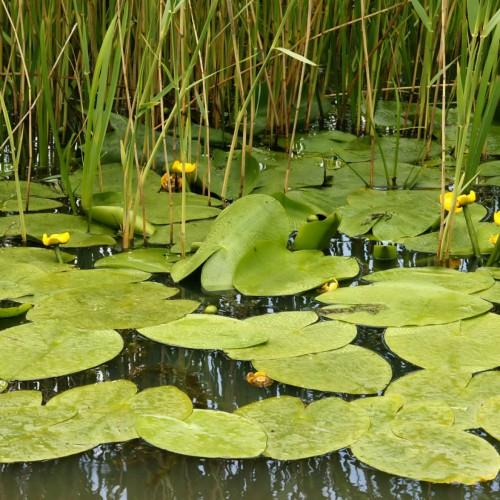
yellow pond lily
Nuphar lutea
Cycle:
Herbaceous Perennial
Watering:
Frequent
Hardiness Zone:
4 - 10
Flowers:
Flowers
Sun:
Full sun,part shade
Leaf:
Yes
Growth Rate:
Low
Maintenance:
Low
Poisonous To Pets:
Yes
Drought Tolerant:
Yes
Salt Tolerant:
Yes
Invasive:
Yes
Care Level:
Medium
watering
Water yellow pond lilies deeply 1-2 times a week when the top few inches of soil are dry to the touch. Yellow pond lilies can tolerate water depths of up to 6 inches (15 cm), so it is important to make sure they are completely submerged. The plants will also benefit from occasional misting in between waterings.
sunlight
Yellow pond lilies (Nuphar lutea) prefer a sunny spot for at least 5-7 hours of direct sunlight each day, optimally between 10am and 4pm or later in the day. This sunlight can come from natural sunlight outdoors or supplemental artificial lighting indoors. When possible, the sunlight should be indirect, as too much direct sunlight can burn the leaves of the pond lilies. Without adequate sunlight, the plants can become leggy and vibrant yellow leaves will not form. Attempt to provide as much consistent light as possible.
pruning
Yellow pond lilies should be pruned twice a year. In the spring (March/April), prune dead foliage and flower stalks down to just above the water surface. In the fall, (October/November) cut back the foliage to the water surface. This helps to keep the aquatic plant growth vigorous. Make sure to wear gloves since the plant, like other members of the Nymphaceae family, can cause skin irritation. Additionally, it's important to dispose of any plant material removed from the pond, as it can still be a source of irritation.
